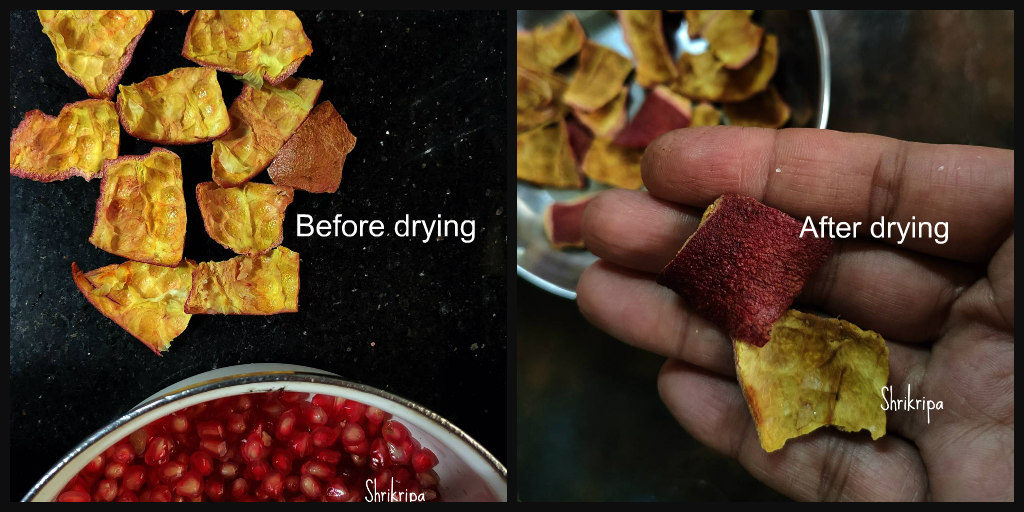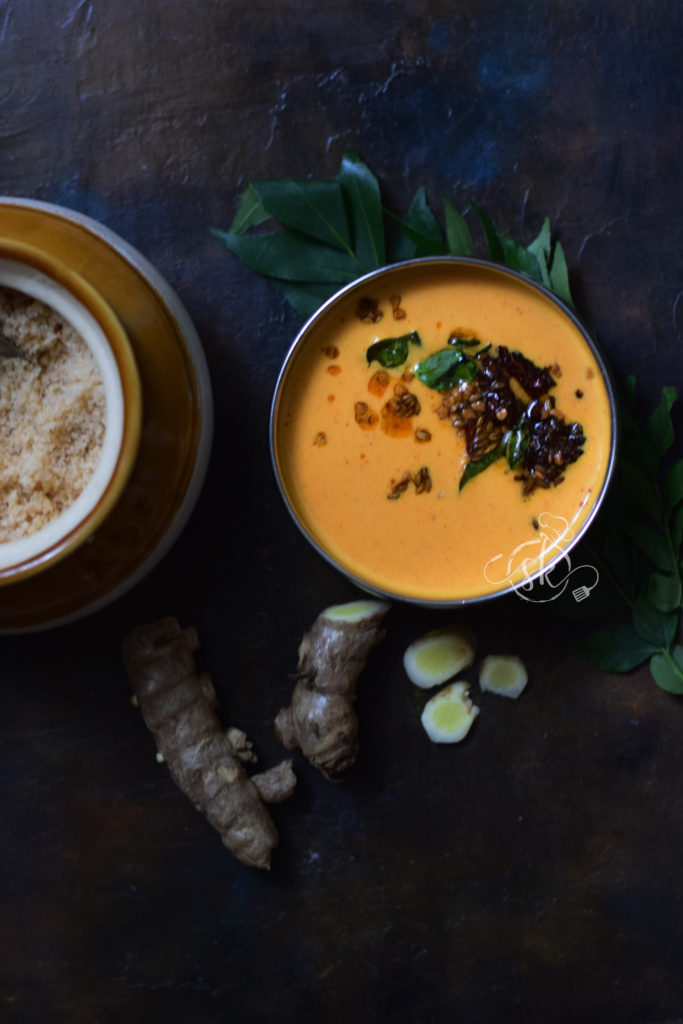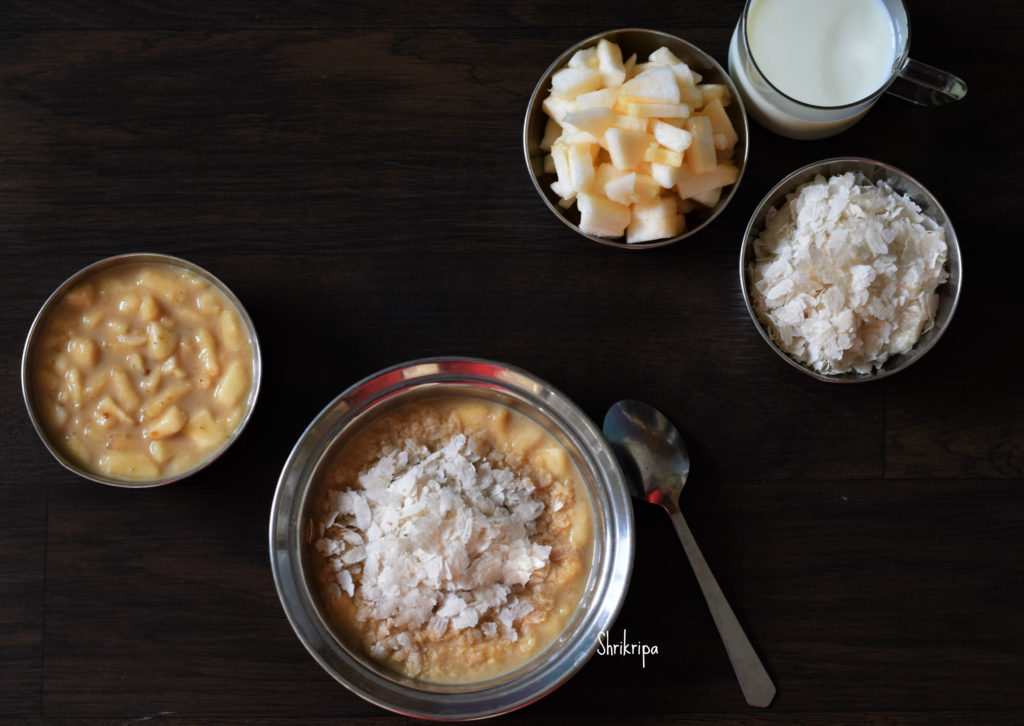Like coconut tree and banana plant , pomegranate is also an extremely useful plant to mankind. Starting from its bark, young leaves , fruits, and its outer peel have many medicinal properties.
In olden days, people never used to buy a fruit from outside. In our villages, people used to eat home grown seasonal fruits , which included wildly grown many berries, guava, chikoo, mango , bell fruits etc. Banana bunch used to be hanged at one corner of the house and it was the only fruit which was available 365 days. Pomegranate was rare, if any person is ill or recuperating after surgery etc then only, it used to enter our houses. So, lady of the house used to treat that not less than the gold  . She used to make it a point to clean the peel by removing all those white covers, break it into 4 to 6 pieces, carefully sun drying and used to store it near “chulha” / we call it as a “ole katte” ( it is basically a olden day’s cooking platform, which used wood as fuel). Throwing out the peel was not heard of and it had an enormous importance in every family in our region.
. She used to make it a point to clean the peel by removing all those white covers, break it into 4 to 6 pieces, carefully sun drying and used to store it near “chulha” / we call it as a “ole katte” ( it is basically a olden day’s cooking platform, which used wood as fuel). Throwing out the peel was not heard of and it had an enormous importance in every family in our region.
According to my co sister, who is an ayurvedic doctor, Ayurveda holds Pomegranate fruit in higher regards because of its antioxidant, pro biotic nature. Due to its anti-bacterial and anti-microbial quality, it helps to bind the stools and helps to control the diarrhoea. She says, Astringent- bitter taste of the peel is the reason behind its anti-diarrhoea quality. Hence, it can be used to cure diarrhoea and not in constipation. Pomegranate peel powder is good for oily skin. If powder is mixed with rose water and applied as a face pack , it reduces acne and brings glow to oily face.
In traditional home remedies When fruit has been used to treat Anaemia , peel has been used to treat dysentery/ diarrhoea (even with blood) . We normally prepare Kashaya by boiling couple of pieces of dried peel in a cup of water, reduced to half and consumed either plain or by adding little jaggery. Otherwise, every now and then, prepare Tambli and consume to maintain our gut health .

Tambli is preferred to total wellbeing of our gut because , it is more palatable than the Kashaya, as well as it consists curd ,which again is a pro-biotic. Hence, if we include pomegranate peel in our regular diet every now and then, it helps in intestinal detoxifying and cleansing. In return it would helps to improve digestion.
Now we would see how to dry those fruit peels at first: It is quite simple. Remove all the white sheath beneath the fruit kernels, dry under the sun or keep it near the windowsill . When it is crisp ,breaks while folding, that is it. Store it in an airtight jar or zip lock. Use whenever it is needed.

Tambli preparation:
Ingredients:
Dried Pomegranate peel – 2 pieces
Black whole pepper – 6 to 8
Cumin – ½ – ¾ tsp
Fresh grated Coconut – 1 fistful
Curd – 1 to 1 ½ small serving spoon
Salt
Ghee
Method:
-Fry pepper, cumin, broken pieces of the peel until it is crispy.

-Grind these into fine paste by adding coconut ,salt and sufficient water.
-Add curd, adjust the consistency by adding water.
-If needed season with ghee, cumin and curry leaves and serve with rice or drink as it is.
NOTE:
1) For vegan version, instead of ghee or clarified butter one can use coconut oil .
2)You can use whole black pepper corns or white pepper corns.



 . She used to make it a point to clean the peel by removing all those white covers, break it into 4 to 6 pieces, carefully sun drying and used to store it near “chulha” / we call it as a “ole katte” ( it is basically a olden day’s cooking platform, which used wood as fuel). Throwing out the peel was not heard of and it had an enormous importance in every family in our region.
. She used to make it a point to clean the peel by removing all those white covers, break it into 4 to 6 pieces, carefully sun drying and used to store it near “chulha” / we call it as a “ole katte” ( it is basically a olden day’s cooking platform, which used wood as fuel). Throwing out the peel was not heard of and it had an enormous importance in every family in our region.







